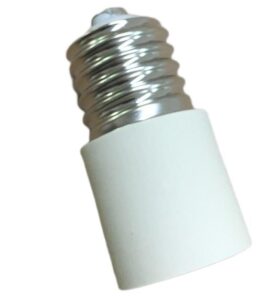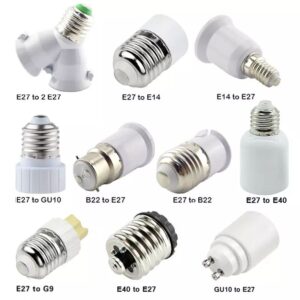In our digitally-driven world, the technology behind the scenes often goes unnoticed. For many, it’s easy to overlook the intricate web of power cables connecting us to this digital era. But as professionals in the lighting industry, particularly at James Lighting, we understand the significance of these hidden lifelines.
The three fundamental types of power cables are non-polarized, polarized, and grounded. Each type, while seemingly similar, serves distinct purposes, ensuring our devices operate safely and effectively. Dive with me into the world of these essential power carriers, and let’s unravel their significance and application.

What distinguishes non-polarized cables?
These are the most basic types of power cables. Identifiable by their identical prongs, non-polarized cables don’t have a dedicated direction for plugging in. Non-polarized cables are versatile and used in devices where electrical current direction isn’t critical.
However, while they’re common, they lack some safety features found in other cable types. At James Lighting, for instance, we prioritize safety, which sometimes means recommending other cable types.
How do polarized cables differ?
Polarized cables stand out due to one prong being larger than the other. This design ensures they’re plugged in a specific direction. This alignment helps maintain the safe and correct flow of electricity, reducing risks.
For many products at James Lighting, especially those that need precise current flow, polarized cables become essential to ensure our lamp holders function optimally.

Why are grounded cables considered safer?
Third on our list, but perhaps the safest, are the grounded cables. Recognizable by three prongs, the additional prong acts as a safety feature. The extra prong connects the device to the ground, acting as an emergency exit for any unwanted current.
It’s this feature that makes these cables invaluable for high-powered devices and safety-focused companies like ours at James Lighting.
How does grounding benefit users?
Grounding might sound complex, but it’s primarily about user safety. Ever worried about electric shocks from appliances? Well, grounded cables are the answer. The grounding process directs excess electricity away, preventing it from reaching you.
At James Lighting, our top concern is ensuring the safety of our products, which often means utilizing the benefits of grounded cables.

Why is proper cable choice important?
Choosing the right cable isn’t just about power. It’s about safety, efficiency, and longevity. The right cable ensures your device operates at its best, reduces risks, and can even extend a device’s life.
At James Lighting, we always stress the importance of proper cable selection, as it can significantly impact the performance of our lamp holders. !
How does the environment influence cable choice?
Imagine using a basic non-polarized cable in an industrial setting. Not the best choice, right? Different environments demand different cable types. While non-polarized might be fine for a bedside lamp, industrial setups might demand grounded cables.
Being in the lighting industry, James Lighting recognizes these nuances and ensures that the right cables are paired with our products.

Are there specialized power cables for specific devices?
Just as shoes are tailored for specific sports, power cables can be specialized for certain devices. For instance, while a standard cable might power your desktop, heavy machinery requires specially designed cables.
It’s always fascinating for us at James Lighting to see how cable specialization impacts various industries, even if our main focus remains on lighting fixtures.
Conclusion
Power cables, often overlooked, play a pivotal role in our interconnected world. Non-polarized, polarized, and grounded cables each bring unique benefits, ensuring our devices remain powered and safe.
At James Lighting, we appreciate the intricacies behind these lifelines, as they significantly impact the lighting world we’re deeply immersed in. Here’s to the silent enablers behind our digital age.













